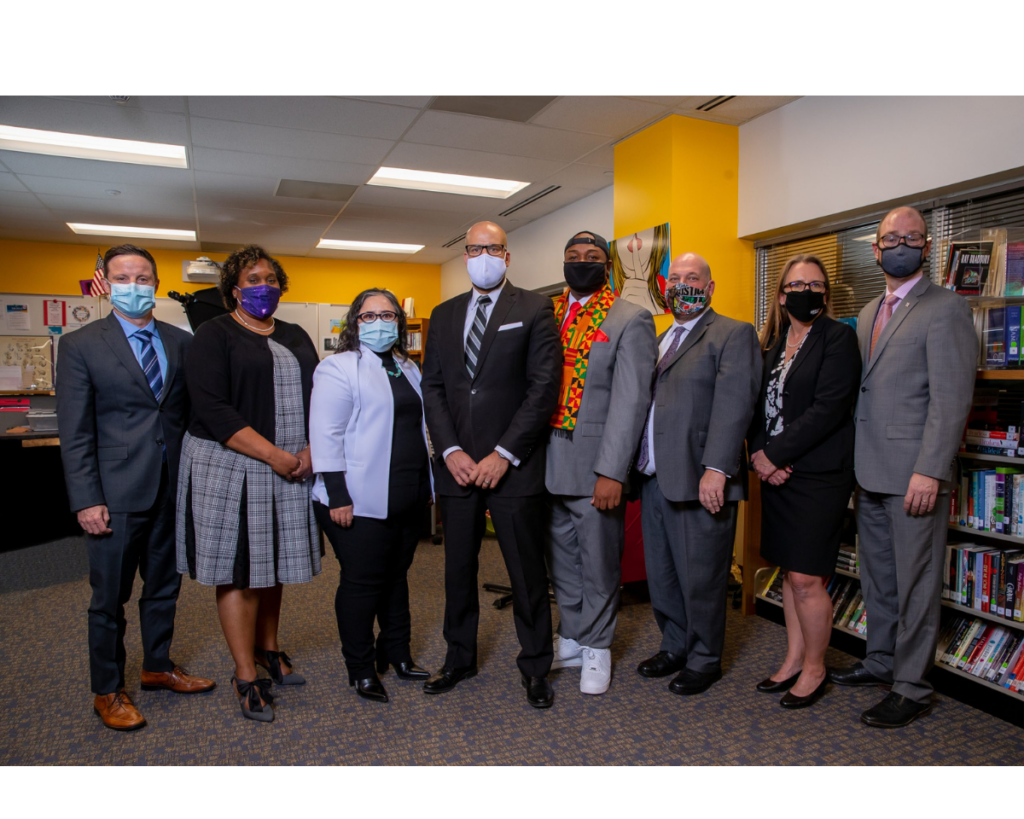Amidst the whirlwind that was last week’s Board of Education meeting focused largely on innovation schools in Denver, something else took shape that is worth paying attention to.
Integrated throughout the night were touchstones about the board’s shift to policy governance. As someone who previously worked in a senior position in the Denver Public Schools (DPS), I have been highly supportive of this shift. In my lived experience working there, the expectations and rules for how we were supposed to operate as a public school system became increasingly murky, and the policies that were written down were not always honored or followed.
Without clear policies and without clear regulations and processes to enact those policies, it can become a free-for-all.
This is not a new challenge for DPS. An example of one such moment from my early tenure in the district was the closure of Henry World School in Southwest Denver. Former Superintendent Tom Boasberg and the board at the time made the decision to close and restart Henry in February 2015 – after School Choice had already closed, and thus after families and students already had made their decisions about where they wanted to go for the next school year – including to Henry.
Further, the school was rated orange on the DPS School Performance Framework; it was not red on the SPF, the lowest rating, and there were district and charter schools supporting students less well than Henry at the time, based on that instrument.
More importantly, the school community had been engaged in improvement planning, and families, teachers and leaders seemed unified around a shared path forward.
Yet, there I found myself, in February, at a meeting at Henry World School explaining that the school was to be closed and restarted. To this day, I still do not know how or why that decision got made. What I do know is that the decision felt arbitrary and deeply dismissive of the work the school community had undertaken together.
The board of the past would later pass a new policy, the School Performance Compact, to try and bring greater transparency to how such decisions were made. Today, that policy has essentially been abandoned, as clearer rules did not actually make school closure or restart decisions easier – for impacted communities or for the board. (We will see if DPS has more success with enrollment-based closures and consolidations. I truly hope so.)
Later in my tenure in DPS, however, I was privileged to learn alongside board members Jennifer Bacon and Carrie Olson as they, in their roles as board vice-president and president, shifted the entire top-down approach DPS had used for years around its decision-making into one that required DPS to operate in a manner that was “community led and district supported.”
The fundamental expectation was that DPS work with community and not do things to community: the people who would be most impacted by any changes needed to be at the table to both define the problems and identify possible solutions.
District staff still had a role as a convener, in bringing data into conversations, in providing technical expertise around relevant laws and regulations, and in ensuring unintended consequences or cascading impacts to other school communities were considered as a path forward was identified.
Whom does the board serve?
Fast forward to last week’s board meeting:
In discussing what policy governance calls “community linkage,” it was revealed that the board’s “owners” under policy governance are voters. That is to whom the board is responsible and whom they purportedly should engage.
Under this frame, the people most impacted by the decisions the board makes and the policies it dictates – students, families, teachers, administrators, other employees of the district, charter and zone partners, etc. – are not the folks to whom the board is accountable.
Moreover, let’s remember:
- The vast majority of students cannot vote.
- Constituents who live in Denver, but who are not U.S. citizens, cannot vote.
- People who have been convicted of felonies cannot vote, and this form of disenfranchisement disproportionately impacts people of color, given the institutionalized racism in our criminal justice system.
- District employees, and charter and zone partners, who do not live in the city and county of Denver cannot vote in the local elections here. (Many people who work in our public school system can no longer afford to live here.)
- Moreover, only 35.74% of voters in Denver even bothered to vote in the last election.
- Moreover, in the school board races specifically, anywhere between 17.82% and 23.51% of the 35.74% of voters who did return a ballot did not actually cast votes to elect school board candidates; they skipped those questions, while answering others – what is called an “undervote.”
- Finally, Denver’s electorate is majority white, and most do not have school-aged children – the exact opposite of whom DPS actually serves.
Taken to its worst conclusion, this framework would seem to suggest that the primary driver of the DPS board would be keeping voters happy (and getting re-elected.) Part of me gets this: they are politicians. And, something about it does not sit right, given that they govern an organization with the higher purpose of “provid[ing] students with Racial and Educational Equity to obtain the knowledge and skills necessary to become contributing citizens in our complex world.”
A return to top-down governance?
This board’s evolving policy governance framework also reflects a return to top-down governance and management. A presentation scheduled for later in the board agenda last week, but for which discussion got nixed due to time constraints, includes a telling graphic on slide 6. The graphic shows the policy-governance cycle for moving from policy to monitoring.
Nowhere in this graphic does community appear: The board decides on priorities, the superintendent interprets the priorities and sets high-level strategy, the district’s senior team creates implementation strategy, employees in schools and elsewhere are supervised to focus on implementing those strategies, and progress-monitoring reports are submitted to the board, which then holds the superintendent accountable.
My sincere hope is that the current DPS board might pause its roll-out of policy governance and create space for some foundational discussions first:
- How does the Board want to balance the dual realities that they are “duly elected” and that the electorate who elects them does not reflect the students and families DPS actually serves?
- Whom do they believe their “ownership” actually is? Are “voters” the right “owners”? Does the long-held shared value of “Students First” still drive in DPS? Are there multiple “owners”? (Also, perhaps some interrogation of the “ownership” language and framework is needed. It feels fundamentally wrong in 2022 to be talking about people being owned by other people.)
- How does this board want to protect against unintended downsides of policy-governance’s heavy reliance on the written word? Although I am a believer in setting clear expectations – and believe this board very much needs to – policy governance as they are implementing it is highly dependent on the written word. When I served in the cabinet with former Superintendent Susana Cordova, a foundational text that guided our work identified over-reliance on the written word as a characteristic of white-supremacy culture. How will this board ensure that its use of policy governance does not unintentionally lead to that potential downside? (To be absolutely clear: no one on the current board is interested in perpetuating white-supremacy culture, quite the opposite. All I am saying is there is a risk of an unintended consequence taking shape here, depending on how the board actualizes its approach to policy governance.)
- What guardrails do they want in place as they exercise power? When I worked at a civil-rights organization, anyone who entered leadership – on staff, on our board, etc. – had to reflect in writing, verbally in the interview process and in their periodic performance reviews around the idea that “all power is corrupting.” In leadership, a person will manage multiple interests and realities, which often are in conflict with each other and some of which will not be directly related to your higher purpose as an organization. What safeguards does this board want to put in place to ensure how they manage competing interests and wield power keeps the higher purpose in view? (The answer to this reflective exercise cannot be “our Ends Statements.” No one understands what that means.)
- Related, how do they want to share power, with whom and why? I am assuming this Board wants to share power, as the opposite of power sharing – power-hoarding – is a tool of white-supremacy culture. I would suggest that one salve here is revisiting the prior framework that Dr. Olson and Ms. Bacon ushered in – an expectation of doing with, not to.
And, whether through a “community linkage” policy or through a specific process for a specific decision the board wants to make, I hope the board will provide clarity about which voices matter most and be transparent about that, including providing the “why” for that prioritization.
For example, in the community-led, district supported process that led to the re-formation of Montbello High School, the board and staff ultimately chose to prioritize the people who live in Montbello, send their children to schools in Montbello, attend schools in Montbello, and/or work in Montbello schools. They also prioritized engagement of those who had historically not come to DPS-convened tables in Montbello, including the majority of Montbello stakeholders who are Latino/a/e/x.
This prioritization seems reasonable – they are the people who are most directly impacted by the changes. I assume there are other prioritization options; I just hope this new Board will transparently articulate theirs, and the why behind it.
Late in last week’s meeting, board Vice-President Tay Anderson raised a concern that this new board seemed at risk of repeating district behaviors they were elected to undo. I cannot know what Anderson meant exactly, yet I join him in raising a red flag that something seems amiss here.
Policy governance is a tool; it is not the point. I hope the board will take the time and space needed to adapt the traditional tools of policy governance to better reflect how they really want to serve as a governing board, and, perhaps most importantly, define to whom they want to be of service.




